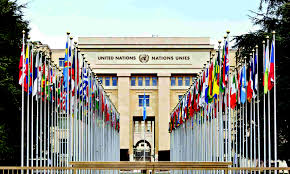UNITED NATIONS: India’s economy is expected to grow by 6.7 per cent in the calendar year 2024, supported by resilient domestic demand, according to a UN report which said higher interest rates and weaker external demand will continue to weigh on investment and exports this year for the country.
The World Economic Situation and Prospects as of mid-2023 released on Tuesday said India’s economy, the largest in the South Asian region, is expected to expand by 5.8 per cent in 2023 and 6.7 per cent in 2024 (calendar year basis), supported by resilient domestic demand.
However, higher interest rates and weaker external demand will continue to weigh on investment and exports in 2023, it said.
Inflation in India is expected to decelerate to 5.5 per cent in 2023 as global commodity prices moderate and slower currency depreciation reduces imported inflation.
The estimates for India’s economic growth in the mid-year assessment remained unchanged from the projections made in the World Economic Situation and Prospects 2023 report launched in January this year.
The flagship report issued in January had said that India’s GDP is projected to moderate to 5.8 per cent in 2023 as higher interest rates and global economic slowdown weigh on investment and exports.
India’s economic growth is expected to remain “strong” even as prospects for other South Asian nations “are more challenging”. India is projected to grow at 6.7 per cent in 2024, the fastest-growing major economy in the world, the flagship report had said.
Chief of the Global Economic Monitoring Branch, Economic Analysis and Policy Division, UN Department of Economic and Social Affairs, Hamid Rashid, had said at a press conference that India is a “bright spot” in the world economy.
In response to a question by PTI on the trajectory of the Indian economy, Rashid said on Tuesday, “India remains a bright spot. Our projection for India hasn’t changed since January and we see many positives, including the inflation has come down significantly.”
“We are pretty confident with our forecast right now for the year,” he said.
India’s inflation is about 5.5 per cent while the regional average for South Asia is 11 per cent. Rashid said this means there will be significant room for both fiscal expansion and monetary accommodation and that would support domestic demand.


